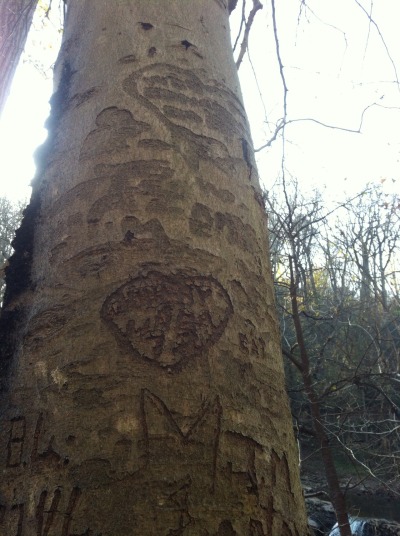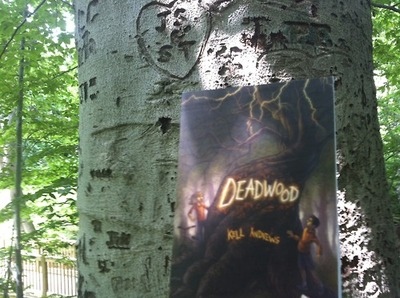
Arborglyphs on an American beech tree
An arborglyph is tree writing — words or pictures carved into the bark of a tree. Smooth-barked tree species, such as beeches, birches, and aspens, are most frequently carved.
Other terms for carved trees are dendrographs, silvagraphs, or culturally modified trees (CMTs), and some of the carvings are historicly or culturally significant — examined by historians, archeologists, and landscape ecologists.
In recent years, serious study and preservation has been made to record culturally significant arborglyphs, such as those Basque sheepherders made on Aspen trees in Nevada and Colorado. Basques from the Pyrenees Mountains between France and Spain immigrated to the U.S. and its territories between 1860 and 1930. Finding work as sheepherders supplying Western towns and camps, they recorded their lives on thousands of aspen trees carved with names, dates, poetry, and pictures. Many of the tree carvings are quite beautiful.
Despite the romantic notion of preserving a message of love or identity in the bark of the tree, the majority of tree carvings are no better than defacements, leaving trees vulnerable to insects and disease. While arborglyphs older than 50 years are now protected by the National Historic Preservation Act of 1966, the best way to preserve a tree is not to carve it in the first place.
More References on Arborglyphs
- Arborglyphs and Tree Carvings, Steve Nix, About.com
- Arborglyphs: Hispanic Aspen Tree Carvings, Peggy Winter Bergon, arborglyphs.com
- Arborglyphs: Sheepherders of Northern Nevada, a Multimedia Exhibit, University of Nevada, Reno
- The Woodland Archives: Interpretative Uses of Arborglyphs, Chris Worrell, Legacy Magazine
- Archeologists Study the World’s Oldest Tree Carvings, Steven Messenger, Treehugger.com

